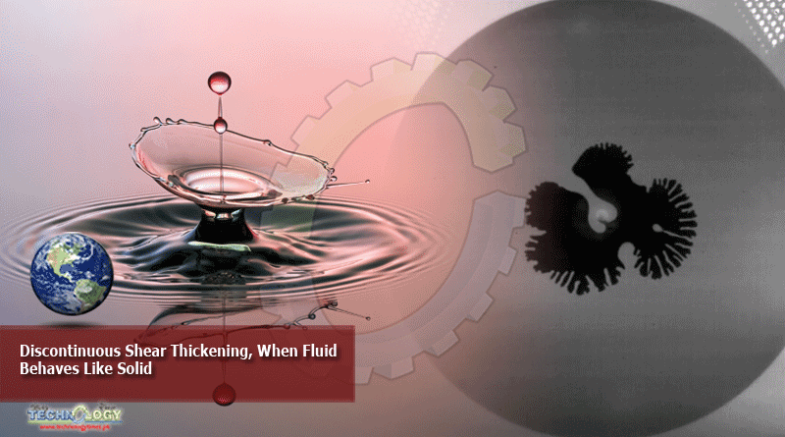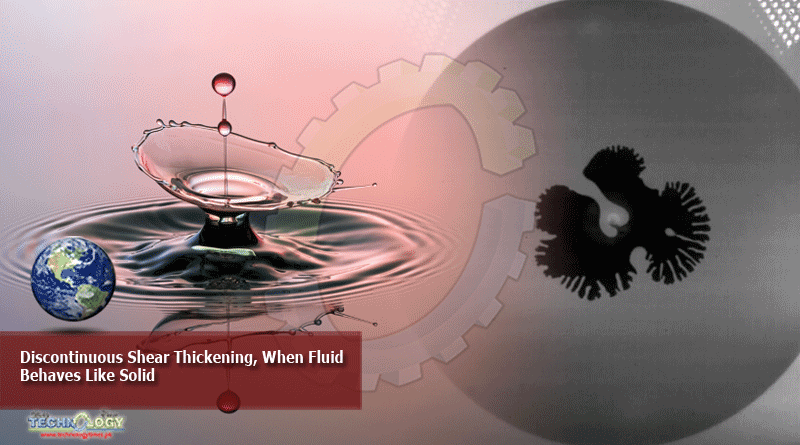A new study observes fluids with a solid response to stress, a phenomenon called Discontinuous Shear Thickening (DST).

This is when liquid abruptly thickens and becomes solid when disturbed. Such intricate patterns often develop in granular materials, porous media, and complex fluids such as foams, gels, and pastes.
Swansea University researchers from the College of Engineering have captured the moments a fluid reacts like a solid. They used a new method of fluid observation under pressurized conditions.
The method involves a high-speed camera to visualize invasion patterns.
For the study, scientists used regular kitchen corn starch mixed with water. This is then placed in a narrow cell; pressurized air is released into the corn starch-water fluid and forces its way.
The camera filmed how the air escape- which either present as fluid-like fingers or solid-like fractures depending on the concentration of corn starch and the air’s pressure.
Dr. Deren Ozturk, who recently completed his Ph.D. in this area, said, “Our findings are of particular interest to the burgeoning DST field of research as it is a novel visual indication of DST behavior that could be used to calibrate future theoretical models. The DST phenomenon is being researched for unique engineering applications such as soft body armor, “smart” speed bumps, and food production.”
“We used corn starch (as a model system for the wider class of shear thickening materials) as it is convenient, widely available, and shows a dramatic shear thickening response. As this kind of invasion experiment (which we have a lot of experience with) had not been previously performed on a DST fluid, our main objective was to try them in the hopes of seeing something interesting.”
“Our main hypothesis was that the fluid would “fracture” like a solid if given enough stress. This would be a great thing to see since a fluid ought to exhibit wide finger patterns. Therefore, we were delighted to see a narrow fracturing response as this meant we had developed a new kind of experiment to probe the conditions for which DST is observed.”
Co-author Dr. Bjornar Sandnes, head of the Complex Flow Lab, comments:
“What is particularly interesting about the corn starch studied here is that friction can be turned on or off like a switch.”
“When only gently disturbed, the grains repel each other, and since they are not in contact, there is no friction, and the material flows like a liquid.”
“Disturb it more forcefully, however, and the grains are pushed into contact such that friction stops the grains freely sliding. The material then behaves more like a solid, which is when we observe fracturing in our experiments.”
This news was originally published at techexplorist.com
